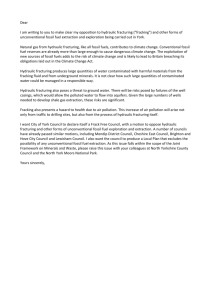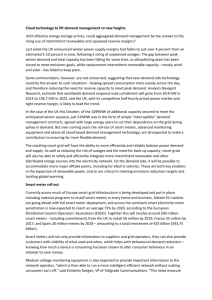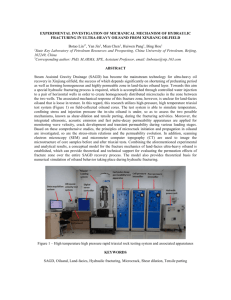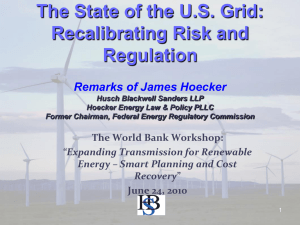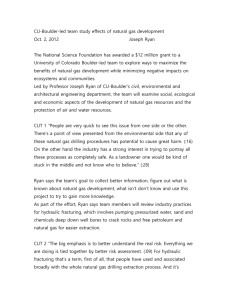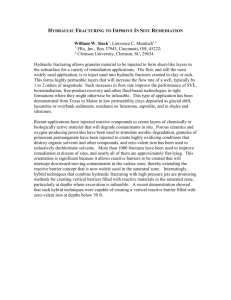GlobalMBA Cohort 2014/15: Abstracts of Global Business Team
advertisement
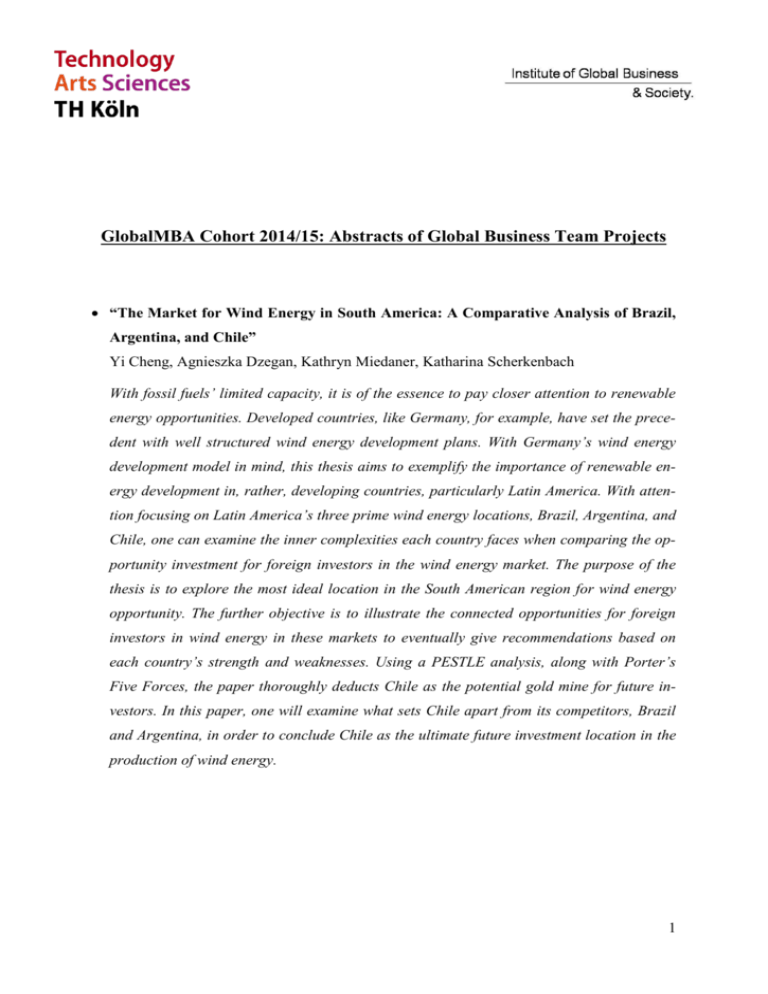
GlobalMBA Cohort 2014/15: Abstracts of Global Business Team Projects “The Market for Wind Energy in South America: A Comparative Analysis of Brazil, Argentina, and Chile” Yi Cheng, Agnieszka Dzegan, Kathryn Miedaner, Katharina Scherkenbach With fossil fuels’ limited capacity, it is of the essence to pay closer attention to renewable energy opportunities. Developed countries, like Germany, for example, have set the precedent with well structured wind energy development plans. With Germany’s wind energy development model in mind, this thesis aims to exemplify the importance of renewable energy development in, rather, developing countries, particularly Latin America. With attention focusing on Latin America’s three prime wind energy locations, Brazil, Argentina, and Chile, one can examine the inner complexities each country faces when comparing the opportunity investment for foreign investors in the wind energy market. The purpose of the thesis is to explore the most ideal location in the South American region for wind energy opportunity. The further objective is to illustrate the connected opportunities for foreign investors in wind energy in these markets to eventually give recommendations based on each country’s strength and weaknesses. Using a PESTLE analysis, along with Porter’s Five Forces, the paper thoroughly deducts Chile as the potential gold mine for future investors. In this paper, one will examine what sets Chile apart from its competitors, Brazil and Argentina, in order to conclude Chile as the ultimate future investment location in the production of wind energy. 1 “The Development of Electric Mobility in China – An Industry Analysis” Freya Rößler, Grzegorz Sawicki, Mingkuan Sun It is estimated that between 1.2 and 2 million deaths per year in China can be attributed to air pollution. Especially in big cities, one of the major causes of air pollution are transportation fuels. To face this issue, the Chinese government had a goal: 500,000 electric vehicles on Chinese streets by 2015. In November 2015 that number was equal to around 220,000 though. The paper’s main objective is to investigate the Chinese Electric Mobility market and to answer the question why the government could not reach its goals. Apart from that the paper tries to investigate opportunities and challenges for the foreign market entrants. The authors analyzed the market using a PESTEL analysis and Porter’s Five Forces. Subsequently, they integrated the results in an opportunities and challenges framework, which furthermore led to conclusions and future outlooks. It was found that the reason why the Chinese government could not meet its expectations was because they were overly optimistic. However, the market is growing fast, with government political and legal support and with no major social barriers. In 2014 120,000 electric vehicles were sold and during the first half of 2015, already 80,000. Therefore, the new goal of the Chinese government – 5 million electric cars on the streets by 2020 - might still be ambitious but feasible if growth rates remain as steady. “Market Opportunities for German SMEs in the Renewable Energy Sector in Poland” Aleksandra Przybył, Nadine Sedlaczek, Marcin Tenerowicz, Xiao Zehao Based on the general background of a global trend towards an increasing use of renewable energies (RE), the research objective of this thesis is to identify market opportunities for German SMEs in the Polish RE sector. After giving an overview of the global and European energy market with special focus on RE, an adapted SWOT analysis is used as main methodology for identifying market opportunities. Strengths and weaknesses of German SMEs are identified by analyzing comparative advantages of Germany and examining competitive advantages of SMEs in the sector. The results are a German RCA in wind and solar technology and German SMEs’ competitive advantages mainly in government support, a qualified workforce and in innovation and technology. Weaknesses are mainly complex legislation, bureaucracy and trouble in getting big commercial loans. Opportunities and threats of the Polish RE market are then identified using Porter’s Diamond and 2 Five Forces models and the Triple Helix model. The findings show opportunities especially in the wind and biomass sectors. Further opportunities are economic growth, increasing environmental awareness, ease of doing business and Polish and EU incentives for RE. Threats mainly lie in outdated grid networks, dominance of five big players, strong coal and nuclear lobbies and financing problems. Combining all findings, the recommended course of action for German SMEs in the Polish RE sector is to focus on the wind sector, build collaborations with companies and research institutions, develop innovative products and use government incentives and EU funds. “Sustainable Energy in the USA: A Market Study on Renewable Energy Transition and Smart Grid Integration” Krzysztof Włudyga, Magdalena Letowska, Susana Silva,Yu Lai Smart grid appeared as a promising solution for the future of energy renewable sources. Being the U.S. the world’s most powerful national economy, trends followed in the country have a great influence in the rest of the world. The paper is a market study on renewable energy transition and smart grid integration. The purpose of the thesis is to unveil the renewable energy transition and the role that smart grid integration plays on this realm, with special focus on the U.S. market. The thesis answers the following questions: what role does the U.S. government play in renewable energy transition and smart grid integration? What are the social or cultural factors that may influence the consumer to adopt smart grid solutions? Are there future possibilities for other states in terms of smart grid system implementation? By using PESTEL analysis for both Florida and California, it is aimed to provide deeper analysis concerning smart grid in the U.S. market. From the PESTEL analysis it is clear that California have more utilities companies, which justifies the larger amount of players in the market with the need of generation and distribution of electricity. It is also clear that while economic and technical frames dominate the analysis, the political frame also plays an important role. There is a huge potential for future energy systems developments in the while United States which is really positive from both business and customer perspective. 3 “Green Building in China: A Market Analysis” Christina Hellwig, Katarzyna Klimek, Jia Kang, Jakub Putała Green buildings are environmentally sustainable buildings which are designed, constructed, and operated to minimize the negative impact on the environment. Although being a concept more predestined for developed countries, the biggest market for green building will soon be China. China, currently already having the largest construction market in the world, will prove to be the fastest market for green building to the following reasons: the demand for residential and commercial construction is flourishing because of economic growth and urbanization, governmental rules and regulation demand energy efficiency concerning new construction and retrofit concerning existing buildings, the government provides various subsidies, and the interest in saving energy is rising, due to either environmental or economic reasons. However, the Chinese market also poses some challenges which this paper will identify by assessing the attractiveness of the green building market in China by conducting a PESTEL analysis and thus identifying challenges and opportunities for international companies interested in entering the market. Furthermore, best practices and main players will be identified and recommendations for businesses will be given. “Fracking: A Sustainability Analysis of Hydraulic Fracturing with a Focus on the US Industry” Jialin Liu, Jocelyn Scott, Dominika Malgorzata Szczerba The United States of America was the world’s largest producer of petroleum and natural gas hydrocarbons in 2014. In the last five years, since the introduction of hydraulic fracturing and horizontal drilling on a mass scale in the US, the production of oil and natural gas from shale reserves has quadrupled. This rapid growth has resulted in controversy and raised the question of sustainability in the US fracking industry. Researchers, policymakers, public media, and the public in general question and try to understand the impact hydraulic fracturing has on the economy, the environment, and on society. This thesis answers the following research question: ‘Is the production of oil and natural gas via hydraulic fracturing in the US sustainable economically, environmentally, and socially?’ To answer this question this paper provides a systematic look into hydraulic fracturing with an in-depth look at the US industry. A general overview of the global and American energy industry, with focus on oil and natural gas production is presented; followed by a PESTEL analysis of the US hydraulic fracturing industry. Lastly hydraulic fracturing’s economic, 4 environmental, and social sustainability within the US is evaluated; followed by the presentation of a model matrix summarizing the overall sustainability of fracking in the US. 5

